

Update of 10:58:43 AM EDT July 6, 2025 —
From this journal on the publication date of Go Set a Watchman —
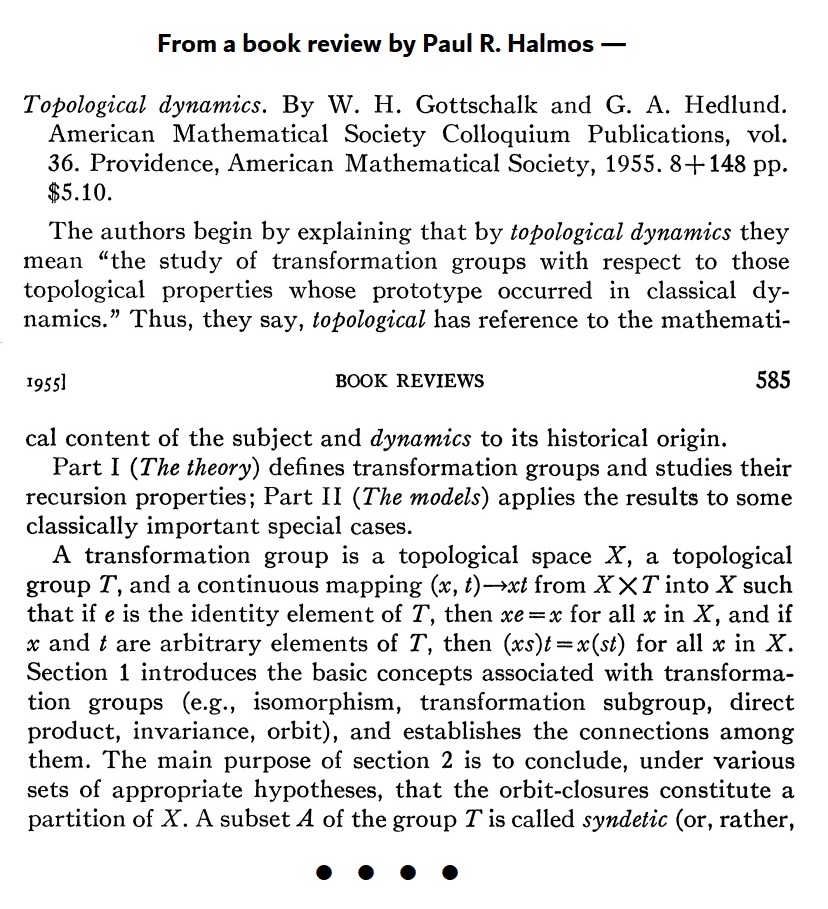
Another approach to the phrase "transformation group" —

Also on March 12, 2024 —
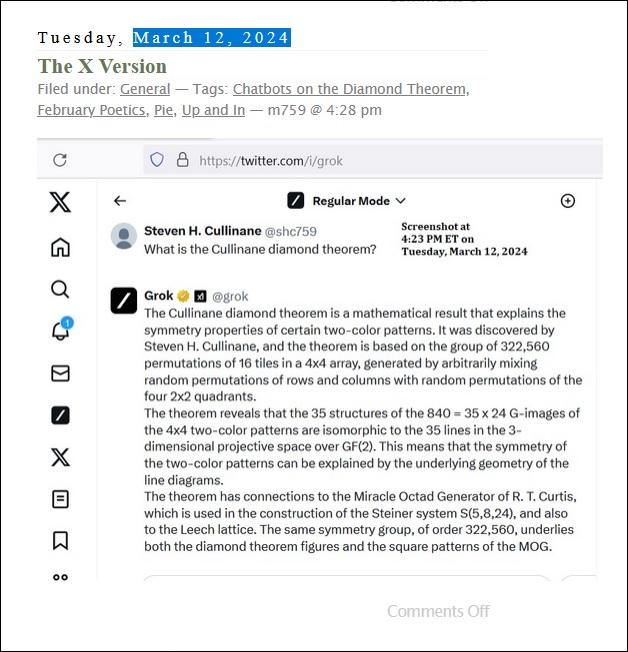
From the previous post . . .

May 15 in this journal —
For greater depth —
https://claude.ai/public/artifacts/7eaf9272-4218-4eee-a0f4-196043333e84 .


Midrash by an anonymous drama critic —
"There's enough of that in real life."
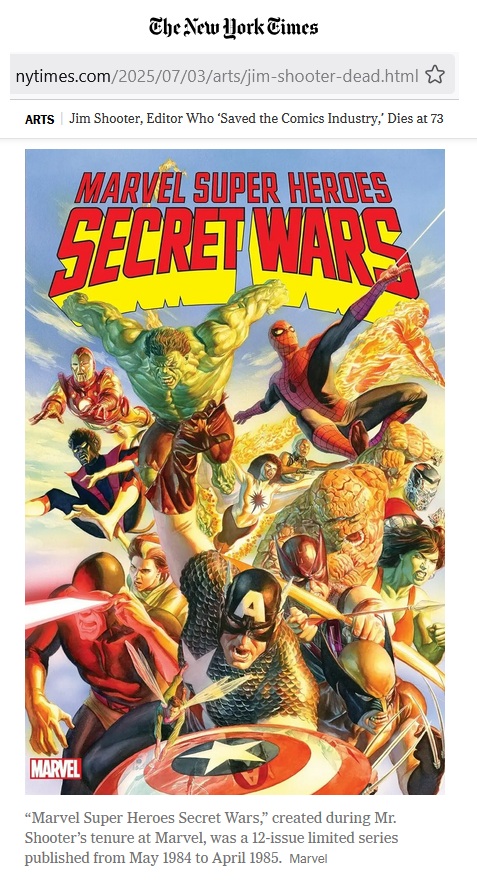
Meanwhile . . .
|
"Victory in war should be received
With funeral ceremonies."
— Quoted at https://laotzu.xyz/chapter/display?id=31.
Update of 9:38 AM … Continuing the above Carradine meditation ….




Related literature . . .
|
Now, you intelligence
Be serious, because
— From the Adrienne Rich poem |
For some related literary remarks, click on the GEB book cover image
at the end of the previous post, "Shadow Work," reposted below —
“… I realized that to me,
Gödel and Escher and Bach
were only shadows
cast in different directions by
some central solid essence.
I tried to reconstruct
the central object, and
came up with this book.”

At least he wasn't a Hofstadter.
“… I realized that to me,
Gödel and Escher and Bach
were only shadows
cast in different directions by
some central solid essence.
I tried to reconstruct
the central object, and
came up with this book.”
Click the above image to enlarge it.
Update of Monday morning, June 30 —
See as well in this journal the phrase"language animal," which
Taylor calls "George Steiner's phrase." Steiner himself attributed
the phrase to the ancient Greeks, but apparently never cited
an exact source, though he gave a transliterated Greek version,
"zoon phonanta" — again without citing a source.
See as well "language animal," a phrase apparently coined by
Fields of Force author George Steiner.
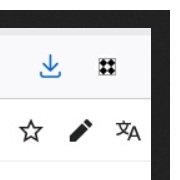
The "Translate" symbol at bottom right above is formed by
the Chinese character "Wen" and the Greek character "Alpha"
(or, if you like, the corresponding English character "A").
A variant rendition of the symbol —
![]()
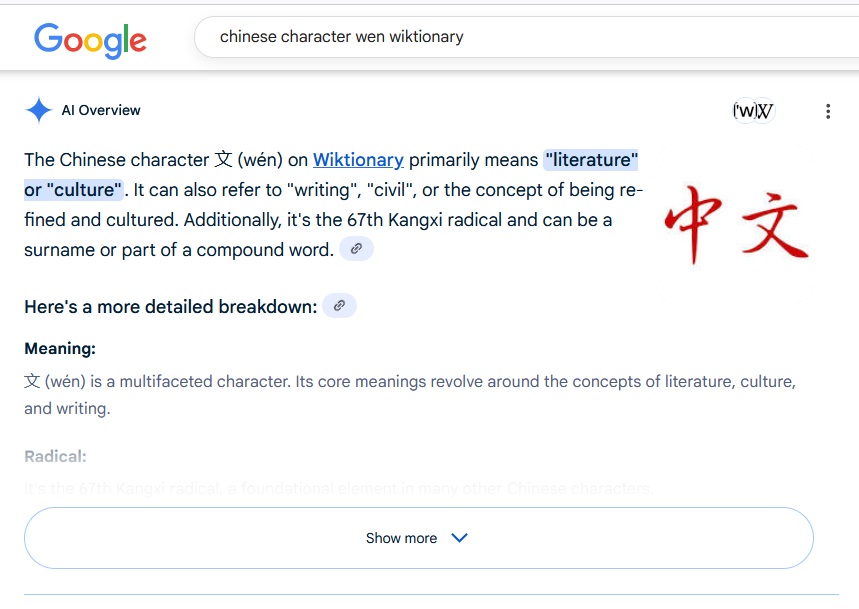
Mr. Schifrin's reported dies natalis was Thursday, June 26, 2025.
Earlier in this journal —
"… an object, a scene, a person, a place." — Ben Libman today.
Exercise: Illustrate each of these nouns.
Geometry related to the famed
"divided line" of Plato's Republic —
Analogous "dividing line" . . .

Other geometry of interest . . .


An AI Overview on early Wittgenstein:
"… his view that the world is composed of facts, not things."
Facts from the above screenshot:
The dates May 4, 2019, and Nov. 8, 2002. Also on those dates —
http://passionforcinema.com/sapphire/ on "Bleu" — Jan. 9, 2010 —
"An extremely long lens on an insert of a sugar cube, dipped just enough,
in a small cup of coffee, so that it gradually seeps in the dark beverage.
Four and a half seconds of unadulterated cinematic bliss."

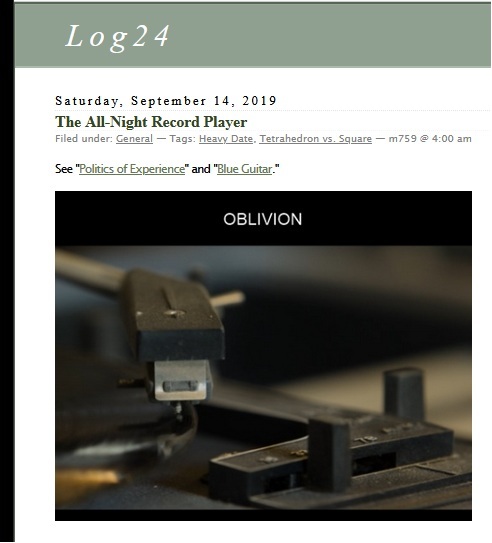

"You can't please everyone, so . . ." — Rick Nelson
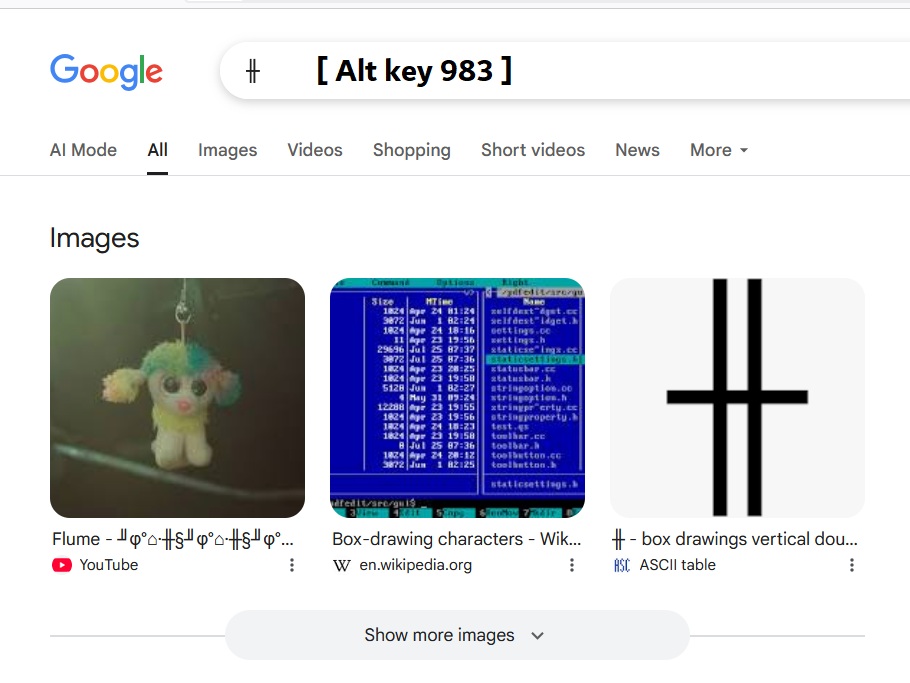
Related reading:
“Concept (scholastics’ verbum mentis)– theological analogy
of Son’s procession as Verbum Patris, 111-12″
— Index to Joyce and Aquinas, by William T. Noon, S.J.,
Yale University Press 1957, second printing 1963, page 162.
From yesterday morning's viewing . . .
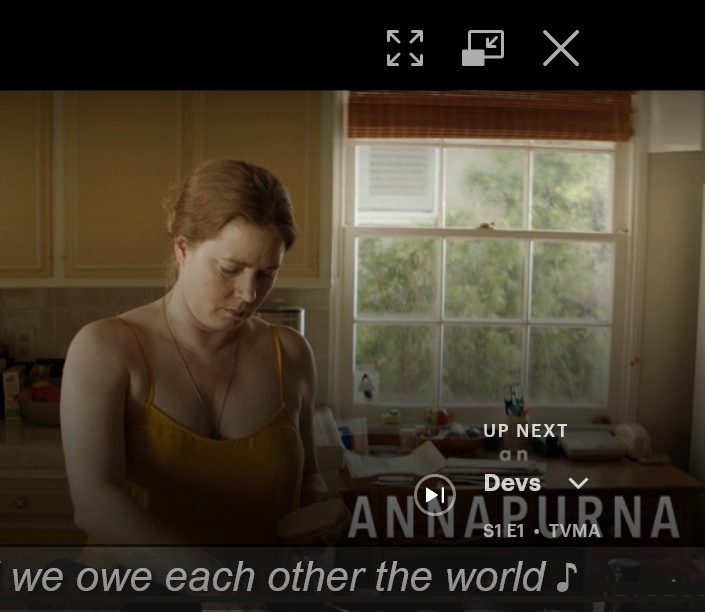
From this morning's viewing . . .
Yesterday morning's viewing, continued last night . . .
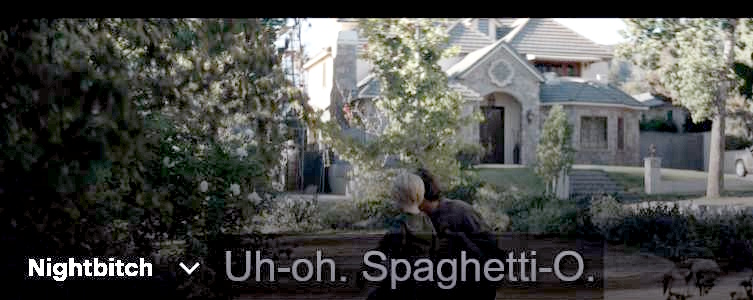

Related material — Jessica Harper and Winnetka.
"Maybe nothing's as it seems
The ground is moving all the time"
— From a song by Patty Griffin, "Back at the Start."

(Day 9 was Bloomsday . . . June 16.)
Related images
"Keep your eye upon the donut . . ."

See as well this journal on the above YouTube date — March 12, 2021 —
within the following search . . .

For Patrick Schwarzenegger —
Update of 9:34 AM EDT Sunday Morning —
"Actually, it's not a dance contest."
Or maybe it is . . .
From a Log24 post of May 19, 2025 —
I have not yet yielded to the "customize artifact" temptation.
____________________________________________________________________________________________
An artifact from a report of an architect's May 19 death
in today's online New York Times —

The above artifact customized, courtesy of Google Image Search —
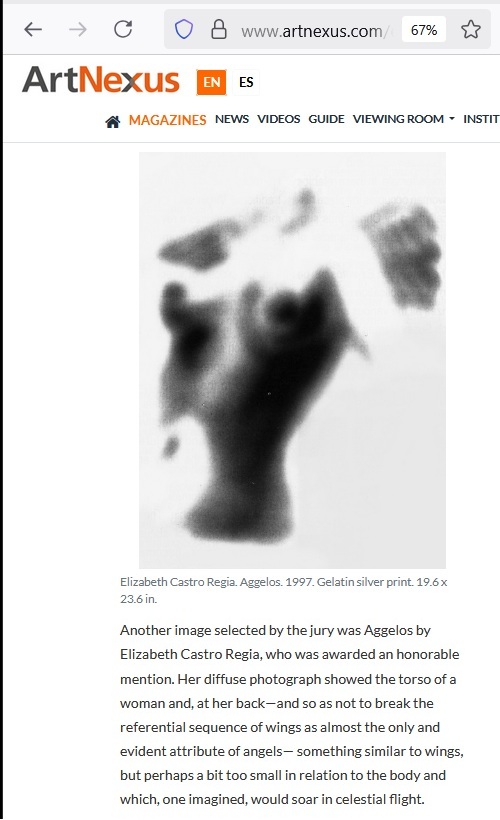

See as well a 2018 paper from the Journal of the History of Philosophy,
"What Did Glaucon Draw?," by Terry Echterling.
December 14, 2005, was the reported dies natalis
of the the author known as Trevanian.
In Memoriam : Posts now tagged Story Work.
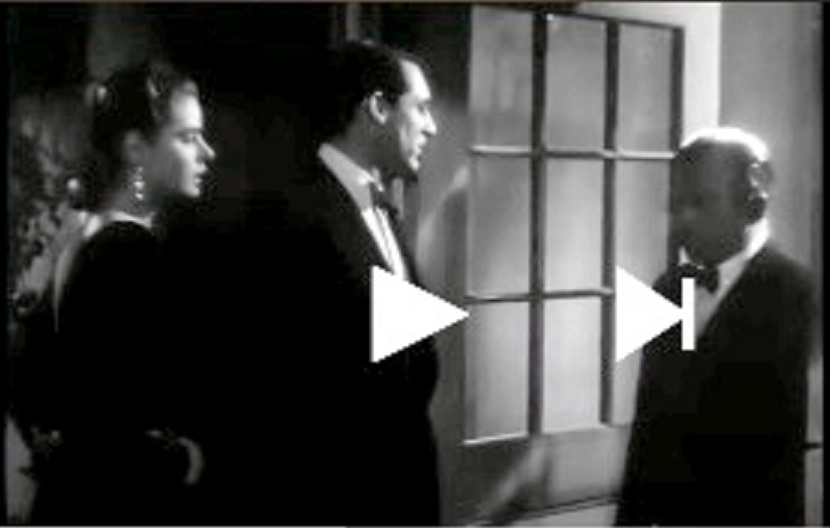
"I'm in with the in grid, I go where the in grid goes."
An Instagram photo posted on June 16, 2025 —

* Cinematic quote from today's previous post . . .
"How far will she have to go to ingratiate herself?"
Always an interesting question.
The above figure conceals three "divided lines," each
divided in the same proportion. These three bent divided lines
AHB, BHC, and ABC are each bent at a division point into two
line segments joined at a right angle.
AH BH AB
__ = __ = __ .
HB HC BC
See also yesterday's post Lines.
Update of 7 AM EDT Friday, June 20, 2025 —
See a New York Times review from May 24, 1959.
For musical accompaniment from later that year,
see the previous post.
Related geometry . . .
"Drop me a line" — Request attributed to Emma Stone.
Meditation on the dropped line —
Analogous "dividing line" . . .

Related vocabulary: Stoicheia.
From this journal on November 7, 2018 —
From The Yale Review on June 9, 2025 —

From bookreporter.com on June 14, 2025 —

A New York Times report today of a death yesterday suggests a review . . .

Related geometry — Cube Bricks.

See also the post "Geometry and Death" of March 13, 2012,
and today's New York Times obituary of the sculptor whose
work is pictured above.

|
<meta property="og:title" content="FUBAR Season 2 Ending Explained: Is Theodore Chips Dead?" /> <meta property="og:description" content="The second season of Netflix's 'FUBAR' brings back the Brunners, who face yet another challenging task, failing which might mean the end of the world as we know it. The season picks up some time after the events of Season 1, where Boro Polonia crashed Tally and Donnie's wedding and was killed by Luke and …" /> <meta property="og:url" content="https://moviedelic.com/fubar-season-2-ending/" /> <meta property="og:site_name" content="Moviedelic" /> <meta property="article:publisher" content="https://www.facebook.com/moviedelic/" /> <meta property="article:published_time" content="2025-06-12T07:03:48+00:00" /> <meta property="article:modified_time" content="2025-06-12T07:04:33+00:00" /> |
|
Now, you intelligence
Be serious, because
— From the Adrienne Rich poem |
Art notes suggested by
Gondoka's painted Doc Martens . . .



A related ancient bygone . . .

See as well Walpurgisnacht 2024.
Click image for a more recent illustration.
From the previous post, a remark from an AI-generated conversation —
"Huh. And what about computer graphics or security?"
A related news item . . .

Some background, suggested by the chessboard in the previous post —

From The Queen's Gambit , by Walter Tevis (1983) —
"She stopped and turned to Beth. 'There is no hint of a
Protestant ethic in Mexico. They are all Latin Catholics,
and they all live in the here and now.' Mrs. Wheatley
had been reading Alan Watts. 'I think I’ll have just one
margarita before I go out. Would you call for one, honey?'
Back in Lexington, Mrs. Wheatley’s voice would sometimes
have a distance to it, as though she were speaking from
some lonely reach of an interior childhood. Here in Mexico City
the voice was distant but the tone was theatrically gay, as though
Alma Wheatley were savoring an incommunicable private mirth.
It made Beth uneasy. For a moment she wanted to say something
about the expensiveness of room service, even measured in pesos,
but she didn’t. She picked up the phone and dialed six. The man
answered in English. She told him to send a margarita and a large
Coke to 713."
https://notebooklm.google.com/notebook/62ad8daa-277e-4fea-a680-9b209883f232
Use the "Audio Overview" button.

A post from the reported dies natalis of the cover girl singer —
"… And the pool was filled with water out of sunlight …."

Some will prefer a more abstract Edge . . .
For further context, see other posts tagged Screw Theory.
From yesterday's post "Occult Logic" —

"Does the phrase 'intellectual source code'
mean anything to you?"
Related entertainment . . .
|
USS Callister: Into Infinity
688
689
690
691
692
693
694
695
696
697
698
699
700
701
702
703
704
705 |
An opinion piece on AI in today's online New York Times is by
Dario Amodei, co-founder and CEO of Anthropic.
Wikipedia says that . . .
"In 2025, Time magazine listed Amodei as
one of the world's 100 most influential people."
The third link below is about an influence on, not by, Amodei.
https://www.nytimes.com/2025/06/05/opinion/
anthropic-ceo-regulate-transparency.html

The Atlantic article above is dated June 3, 2025. For a much more detailed
AI report on the diamond theorem, see a different June 3 document —
a Log24 post titled . . .
A line from Black Mirror's "USS Callister: Into Infinity" —

A related quotation —
|
"The Game in the Ship cannot be approached as a job, a vocation, a career, or a recreation. To the contrary, it is Life and Death itself at work there. In the Inner Game, we call the Game Dhum Welur, the Mind of God. And that Mind is a terrible mind, that one may not face directly and remain whole. Some of the forerunners guessed it long ago — first the Hebrews far back in time, others along the way, and they wisely left it alone, left the Arcana alone. That is why those who studied the occult arts were either fools or doomed. Fools if they were wrong, and most were; doomed if right. The forerunners know, and stay away." |
Update of 1:10 PM EDT the same day —

"Does the phrase 'intellectual source code'
mean anything to you?"
"… The falcon cannot hear the falconer;
Things fall apart; the centre cannot hold…."
— William Butler Yeats, written in 1919.
From https://www.anthropic.com/customers/futurehouse —
|
Building an aviary of FutureHouse has developed an elegant, open source framework for AI agents called "aviary." The name comes from their bird-themed convention and is inspired by birds, who are the perfect mascot for FutureHouse. They are endowed with natural intelligence, vastly amplified by their ability to use tools (much like FutureHouse’s agents). Each agent addresses different aspects of the scientific workflow, with Claude powering the reasoning capabilities across the ecosystem. The current platform includes: . . . . Falcon: Designed for deeper analysis and report generation, Falcon has access to several specialized scientific databases, like OpenTargets, and can produce comprehensive structured documents. When researchers need a thorough literature review or high-level synthesis, Falcon delivers complete reports with abstracts and conclusions—particularly valuable for researchers exploring new domains. . . . . |
Perhaps the "degrees of Kevin Bacon" concept applies here . . .
Sunday, June 1, 2025
|
FutureHouse diamond theorem report on May 3, 2025 —
From https://platform.futurehouse.org/trajectories/995a20ed-9de3-43b9-83d2-64d4b8b92bf2.
What is the Cullinane diamond theorem?
This report presents a detailed exposition of the Cullinane diamond theorem, a result that interweaves combinatorics, finite projective geometry, symmetry, and algebra. In its original formulation, the theorem concerns a 4×4 array composed of 16 two‐color, diagonally divided square tiles—a configuration referred to as the diamond figure D—and describes the remarkable invariance properties of D when acted on by a very large permutation group. This report explains the theorem’s statement, the group–theoretic framework underlying it, its geometric interpretation in terms of finite projective spaces, and its algebraic extensions via delta transforms. In doing so, the discussion also elucidates connections with Latin square geometry and deep algebraic structures such as those underlying the Miracle Octad Generator (MOG) and Mathieu groups.
Abstract
The Cullinane diamond theorem asserts that every image of the four‐diamond figure D, arising from a 4×4 two‐color diagonally divided square array, exhibits either ordinary or color–interchange symmetry under a group G of order 322,560. (cullinane2013thediamondtheorem pages 1-5) This transformation group, generated by arbitrary permutations of the rows, columns, and the four 2×2 quadrants of the array, is isomorphic to the affine group acting on a 4–dimensional vector space over the finite field GF(2). The theorem further establishes that the 840 distinct images of D decompose naturally into 35 equivalence classes—each corresponding bijectively to one of the 35 lines in the three–dimensional projective space PG(3,2). In each equivalence class the images can be represented by three interrelated line diagrams whose entries, under binary (mod 2) addition, sum to zero. This binary-addition property not only reflects the underlying structure of PG(3,2) but also serves as a combinatorial invariant that connects the pattern symmetries with the algebra of finite fields. (cullinane2013thediamondtheorem pages 1-5) Moreover, by considering the so-called delta transforms on arrays—where each element of a square array is replaced by a uniquely determined diagonally divided two–color tile—an ideal is produced within a larger ring of symmetric patterns. Such an ideal, consisting in one instance of 1024 “diamond” patterns within a ring of 4096 symmetric configurations, paves the way for an infinite family of “diamond” rings that are isomorphic to matrix rings over GF(4). (cullinane2013thediamondtheorem pages 1-5, cullinaneUnknownyearexamples pages 1-1) In addition, the symmetry group involved in the theorem is intimately related to the octad stabilizer subgroup within the Mathieu group M24, as emphasized in studies of the Miracle Octad Generator. (cullinane2013thediamondtheorem pages 1-5, kellyUnknownyearmathieugroupsthe pages 1-1)
The Cullinane diamond theorem occupies a position of central importance in several overlapping domains of mathematics. Its beauty lies in how a deceptively simple graphic design—the four–diamond figure D obtained from a 4×4 array of specially divided square tiles—encodes deep symmetry properties when subjected to highly structured group actions. The theorem was originally developed to provide a purely geometric explanation for longstanding puzzles in symmetric pattern design, yet its ramifications extend to Latin square theory, coding theory, and even computer–aided secret sharing in cryptography. (cullinane2013thediamondtheorem pages 1-5) By using group actions derived from the affine group over GF(2), Cullinane demonstrated that the resulting images not only preserve symmetry but also organize themselves in a manner that reflects the structure of the finite projective space PG(3,2). This report systematically outlines the theorem, providing the necessary mathematical background and exploring its broader significance.
At the heart of the theorem is the diamond figure D—a 4×4 array whose 16 unit squares are each divided along a diagonal into two contrasting colors. This design is not arbitrary; it is constructed so that when transformations are applied, its inherent symmetry properties become evident. The large permutation group G, of order 322,560, is generated by all possible permutations of the rows, the columns, and the four 2×2 quadrants. (cullinane2013thediamondtheorem pages 1-5) An essential observation is that G is isomorphic to the full affine group on a four–dimensional vector space over GF(2), where GF(2) is the finite field with two elements. The affine structure imparts a rich algebraic framework that facilitates rigorous combinatorial analysis. Each element of G rearranges the tiles of D, yet—remarkably—the resulting pattern always exhibits a precise form of symmetry, be it an ordinary symmetry (a geometric transformation mapping the pattern to itself) or a color–interchange symmetry (where interchanging the two colors yields an invariant image).
One of the most striking outcomes of Cullinane’s work is the enumeration of the distinct images of D under the action of G. Detailed analysis reveals that there are exactly 840 such images. These 840 images do not form a homogeneous collection; instead, they naturally partition into 35 distinct equivalence classes. (cullinane2013thediamondtheorem pages 1-5) This partitioning is not coincidental. In fact, there is a bijective correspondence between the 35 equivalence classes of images and the 35 lines in PG(3,2)—the projective space of dimension three over GF(2). In finite projective geometry, PG(3,2) is a highly symmetric structure that contains 15 points and 35 lines, and the incidence relations among these geometric subspaces mirror the combinatorial relationships found among the images of D. Thus, the combinatorial arrangement of tiles in D under all G–images embodies a finite geometric structure that is isomorphic to PG(3,2). (cullinane2013thediamondtheorem pages 1-5)
Each of the 35 equivalence classes can be concretely visualized via collections of three interrelated diagrams known as line diagrams. These diagrams are so constructed that, when added together modulo 2 (i.e., performing binary addition on their entries), the resulting sum is zero. This property is highly significant; it encapsulates the idea that the three diagrams represent three distinct partitions of the four tiles into two subsets, and the symmetry is maintained by the fact that their binary sum (in the field GF(2)) vanishes. (cullinane2013thediamondtheorem pages 1-5) In effect, the line diagrams serve as a pictorial and algebraic manifestation of the structure of PG(3,2). The binary-addition condition is reminiscent of the behavior of vectors in a finite vector space, reinforcing the interpretation of the underlying symmetries in linear algebraic terms. This representation is of particular interest in algebraic combinatorics, as it provides a concrete invariant that can be used to classify and analyze symmetric patterns generated by G.
Beyond the geometric interpretation lies a powerful algebraic generalization. The theorem has been extended by considering “delta transforms” of square arrays. A delta transform is defined as a one-to-one substitution procedure in which each entry of an array (often arising from a Latin square or a similar combinatorial object) is replaced by a fixed diamond pattern—a diagonally divided, two–colored unit square. (cullinaneUnknownyearexamples pages 1-1) When applied to structured arrays such as the Klein group table (which itself can be viewed as a Latin square over GF(4)), the delta transform preserves the symmetry properties inherent in the original configuration. This invariance under delta transforms implies that the entire algebra generated by the images of the Klein group table under G comprises solely symmetrical arrays. More precisely, these images generate an ideal in a larger ring—a ring of 4096 symmetric patterns—from which one can extract an ideal consisting of 1024 “diamond” patterns. The algebraic structure revealed in this manner is so robust that it generalizes to an infinite family of diamond rings, each of which is isomorphic to a matrix ring over GF(4). (cullinane2013thediamondtheorem pages 1-5, cullinaneUnknownyearexamples pages 1-1) This connection to matrix rings over finite fields accentuates the deep interplay between combinatorial design and algebraic structures.
Another fascinating aspect of the Cullinane diamond theorem is its relation to Latin square geometry—a classical topic in combinatorics that deals with square arrays in which each symbol occurs exactly once per row and once per column. In some of Cullinane’s later work, particularly in his study of Latin-square geometry, it is shown that the six 4×4 Latin squares (that have orthogonal Latin mates) can be embedded into a set of 35 arrays in a manner that mirrors the correspondence between the diamond images and the 35 lines of PG(3,2). (cullinaneUnknownyearlatinsquaregeometry pages 1-6) In this interpretation, the orthogonality property of Latin squares is translated into a geometric condition: two Latin squares are orthogonal if and only if the corresponding lines in PG(3,2) are skew (that is, they do not intersect). This geometric visualization not only provides intuition for the phenomenon of orthogonality but also serves as an explicit bridge between classical combinatorial design and finite projective geometry. In doing so, it enriches our understanding of both domains while demonstrating the versatility of the diamond theorem’s underlying principles.
The permutation group G, with its staggering order of 322,560, is by itself an object of intense interest in group theory. Much more than a tool for rearranging tiles, G is isomorphic to the affine group acting on the 4-dimensional linear space over GF(2). This same group appears elsewhere in mathematics, in particular as the octad stabilizer in the Mathieu group M24, a sporadic simple group that plays a central role in combinatorial design and coding theory. In fact, R. T. Curtis’s Miracle Octad Generator (MOG)—developed as a way to generate and study the Golay code (an exceptional error–correcting code) and related combinatorial structures—utilizes a configuration strongly reminiscent of the diamond–theorem figures. (cullinane2013thediamondtheorem pages 1-5, kellyUnknownyearmathieugroupsthe pages 1-1) This correspondence highlights the deep algebraic and combinatorial unity underlying what might initially appear as unrelated phenomena: the design of quilt patterns and the structure of error–correcting codes.
To appreciate the full depth of the Cullinane diamond theorem, it is instructive to examine the group–theoretic foundations in greater detail. The generator set for the group G comprises three independent types of permutations—those acting on rows, on columns, and on the four 2×2 quadrants. This decomposition implies that every element of G can be represented as a combination of three distinct permutations, each contributing to the overall transformation of the array D. When these permutations are interpreted within the framework of an affine vector space over GF(2), one observes that their composition corresponds to linear transformations accompanied by translations. (cullinane2013thediamondtheorem pages 1-5) This realization not only explains why G is isomorphic to an affine group but also establishes a link between the combinatorial structure of the tiled array and the rich theory of finite fields and linear algebra. Such a connection is essential to both the formulation and the proof of the theorem.
The finite field GF(2) consists of just two elements—0 and 1—which endow any vector space over GF(2) with a binary structure. In the context of the diamond theorem, every tile’s coloring, as well as the additive relations in the line diagrams, are naturally described by elements of GF(2). Moreover, the projective space PG(3,2) arises from considering the nonzero vectors in the four–dimensional space over GF(2) up to scalar multiples. PG(3,2) contains exactly 15 points and 35 lines; it is precisely this enumeration of lines that inspires the classification of the 840 images of D into 35 equivalence classes. (cullinane2013thediamondtheorem pages 1-5) The binary addition (mod 2) property of the three line diagrams representing each class mirrors the fact that, in PG(3,2), any three collinear points obey a linear relation summing to zero. This elegant correspondence between abstract finite geometry and the tangible patterns of a tiled array is one of the most striking features of the theorem.
An additional layer of sophistication in the theorem’s framework is provided by the concept of delta transforms. A delta transform is a systematic substitution process in which every entry of a square array (often drawn from a four–element set) is replaced by a fixed, diagonally divided two–colored tile. (cullinaneUnknownyearexamples pages 1-1) When Delta transforms are applied to the table corresponding to the Klein group, the resulting new arrays (called delta transforms of the Klein group table) retain either ordinary symmetry or color–interchange symmetry. This invariance is maintained under the full group G, which means that the delta transform itself is an operation that commutes with the action of G. The combinatorial invariant arising from the delta transforms is highly significant because it allows one to define sums and products on the set of G–images of D, thereby generating a ring of symmetric patterns. In particular, this ring contains an ideal consisting of 1024 diamond patterns and generalizes to an infinite family of diamond rings isomorphic to matrix rings over GF(4). (cullinane2013thediamondtheorem pages 1-5, cullinaneUnknownyearexamples pages 1-1) The elegance of this result lies in the seamless transition from a discrete combinatorial construct to a rich algebraic structure.
The principles behind the Cullinane diamond theorem have further inspired research into Latin square geometry. In the special case of 4×4 Latin squares, it has been shown that the six Latin squares possessing orthogonal Latin mates can be embedded within a configuration of 35 arrays. (cullinaneUnknownyearlatinsquaregeometry pages 1-6) In this embedding, the traditional notion of orthogonality of Latin squares—originally based on combinatorial criteria—corresponds exactly to the geometric property of skewness (i.e., the non–intersection of lines) in the projective space PG(3,2). This geometric interpretation offers not only a new perspective on the classical problem of constructing mutually orthogonal Latin squares but also demonstrates that the diamond theorem’s reach extends well beyond its original domain of tiling patterns. The correspondence essentially means that the combinatorial structure of a Latin square is mirrored in the arrangement of lines in a finite projective space, and the multiple representations provided by the delta transform further cement this connection. (cullinaneUnknownyearlatinsquaregeometry pages 1-6) This interplay between Latin square geometry and finite projective spaces opens up opportunities for deeper exploration of geometrical invariants and symmetric designs.
[ Correction by Cullinane on June 11, 2025 – This section is in error and should be ignored. ]
While the Cullinane diamond theorem is rooted in abstract combinatorial and geometric concepts, its influence extends into various applied fields. In the domain of facility location, for example, researchers have exploited similar “diamond” structures to characterize regions where optimal locations occur under the rectilinear (L1) norm, as these regions naturally form diamond–shaped loci defined by distance constraints. (giannikos1993optimallocationof pages 17-23) Even though these applications focus on geometric optimization rather than algebraic symmetry, the underlying idea—namely the robustness of diamond–shaped invariances under transformation—is intimately connected to the theorem. Similarly, in the realm of computer graphics and cryptographic visual secret sharing, the diamond theorem provides the structural foundation for generating correlation patterns. In such schemes, 4×4 diamond patterns are sequentially applied to non-overlapping blocks of an image to ensure both secure partitioning and reconstruction of the original visual information. (harish2016newvisualsecret pages 1-2) These diverse applications underscore the theorem’s versatility; its central theme of a combinatorial invariant under a massive symmetry group serves as a unifying idea that transcends disciplinary boundaries.
The explicit description of the permutation group G and the classification of the 840 images into 35 equivalence classes have also motivated algorithmic approaches for pattern generation and classification. For instance, when one wishes to generate all possible G–images of D, it is computationally efficient to recognize that these images naturally fall into 35 distinct classes corresponding to the 35 lines in PG(3,2). Such insights reduce the complexity of computational searches and enable the practical implementation of algorithms in computer graphics, pattern recognition, and combinatorial design. (coqart1978computergraphicsgrid pages 3-3) Moreover, the delta transform method has been implemented in algebraic software packages to construct large rings of symmetric patterns—a development that has implications for both theoretical investigations and real-world problem solving in areas such as coding theory and error–correction. The connection to matrix rings over GF(4) is particularly promising, as it provides an algebraic framework for dealing with vast families of symmetric objects in a systematic manner.
It is instructive to compare the Cullinane diamond theorem with other well-known geometric and combinatorial results. In contrast to classical theorems that rely solely on continuous symmetries or Euclidean transformations, the diamond theorem exploits the combinatorial rigidity of discrete structures. Its reliance on finite fields and projective spaces distinguishes it from many traditional results in geometry. Moreover, while other results in tiling theory or Latin square theory are often limited to ad hoc proofs for specific cases, the Cullinane diamond theorem offers a unifying algebraic–geometric framework that explains not only why symmetric patterns occur but also how they are structured in an entirely discrete setting. This synthesis of group theory, finite geometry, and combinatorial design represents an advance over previous approaches that tended to treat these areas in isolation. (cullinane2013thediamondtheorem pages 1-5, cullinaneUnknownyearlatinsquaregeometry pages 1-6)
The origins of the Cullinane diamond theorem can be traced back to investigations into the symmetry properties of classical tile patterns, including those found in quilts and combinatorial designs. Earlier research, such as that on the delta transforms of the Klein group table, hinted at the possibility that simple tiling arrangements might possess highly non–trivial symmetry properties. Over time, these insights matured into the full–fledged theorem attributed to Steven H. Cullinane, which formalized the connection between a 4×4 diamond figure and the affine group over GF(2). The subsequent discovery of the correspondence between the 840 images and the 35 lines in PG(3,2) further entrenched the theorem’s role as a bridge between discrete combinatorial designs and classical finite projective geometry. In recent years, further work on Latin square geometry and visual secret sharing has expanded the theorem’s impact well beyond its original context, demonstrating that the ideas encapsulated in the diamond theorem are not only mathematically deep but also broadly applicable. (cullinane2013thediamondtheorem pages 1-5, cullinaneUnknownyearlatinsquaregeometry pages 1-6)
The implications of the Cullinane diamond theorem are manifold. On the theoretical side, the theorem points to a rich interplay between discrete geometry, group theory, and algebra that should be explored in greater depth. One promising direction is the extension of the theorem to higher–order arrays and to patterns with more than two colors. Such generalizations would likely lead to the discovery of new equivalence classes and perhaps even connect with higher–dimensional projective spaces. Another area ripe for exploration is the further algebraic analysis of the ring structures generated by delta transforms. In particular, the isomorphism of infinite families of diamond rings to matrix rings over GF(4) suggests deep algebraic symmetries that have yet to be fully exploited. On the applied side, insights derived from the Cullinane diamond theorem have already found applications in facility location, computer graphics, and cryptographic visual secret sharing; further research may reveal additional uses in coding theory, error–correction, and possibly even in the design of secure communication protocols. (cullinaneUnknownyearlatinsquaregeometry pages 1-6, harish2016newvisualsecret pages 1-2)
In summary, the Cullinane diamond theorem is a landmark result that provides a unified explanation for the surprising symmetry properties observed in the four–diamond figure D. When D is subjected to the full action of the permutation group G (of order 322,560), every image obtained—amounting to a total of 840 distinct patterns—exhibits either ordinary or color–interchange symmetry. These images can be uniquely categorized into 35 equivalence classes, each corresponding to a line in the finite projective space PG(3,2). The representation of these classes by three line diagrams whose binary sum is zero not only reinforces the connection with the additive structure of GF(2) but also ties the entire construction to the elegant framework of finite projective geometry. (cullinane2013thediamondtheorem pages 1-5) Further, by introducing delta transforms on square arrays, the theorem extends into an algebraic domain—revealing that the set of symmetric images forms an ideal in a ring of symmetric patterns, with striking isomorphisms to matrix rings over GF(4). This algebraic perspective has fostered connections to Latin square geometry, where the orthogonality of Latin squares is naturally interpreted in terms of skew lines in PG(3,2), and to the combinatorial structures underlying the Miracle Octad Generator and Mathieu groups. (cullinane2013thediamondtheorem pages 1-5, kellyUnknownyearmathieugroupsthe pages 1-1) Ultimately, the Cullinane diamond theorem stands as a testament to the power of combining combinatorial, geometric, and algebraic methods to reveal and classify deep symmetry properties in discrete structures. Its continued influence across diverse fields—from pure mathematics to applied design and cryptographic systems—underscores both its elegance and its far–reaching impact. (harish2016newvisualsecret pages 1-2)
This comprehensive investigation thus not only answers the question “What is the Cullinane diamond theorem?” but also situates it firmly within a larger mathematical landscape that continues to develop and inspire new research.
(cullinane2013thediamondtheorem pages 1-5): SH Cullinane. The diamond theorem. arXiv: Group Theory, Aug 2013. URL: https://doi.org/10.48550/arxiv.1308.1075, doi:10.48550/arxiv.1308.1075. This article has 2 citations.
(cullinaneUnknownyearlatinsquaregeometry pages 1-6): SH Cullinane. Latin-square geometry. Unknown journal, Unknown year.
(giannikos1993optimallocationof pages 17-23): I Giannikos. Optimal location of single and multiple obnoxious facilities: algorithms for the maximin criterion under different norms. Unknown journal, 1993.
[ Correction by Cullinane on June 11, 2025. The Giannikos reference cites a different Cullinane. It is irrelevant and should be ignored. ]
(coqart1978computergraphicsgrid pages 3-3): Roger Coqart. Computer graphics: grid structures. Leonardo, 11:118-119, Jan 1978. URL: https://doi.org/10.2307/1574008, doi:10.2307/1574008. This article has 3 citations and is from a highest quality peer-reviewed journal.
(harish2016newvisualsecret pages 1-2): V. Harish, N. Rajesh Kumar, and N. R. Raajan. New visual secret sharing scheme for gray-level images using diamond theorem correlation pattern structure. 2016 International Conference on Circuit, Power and Computing Technologies (ICCPCT), pages 1-5, Mar 2016. URL: https://doi.org/10.1109/iccpct.2016.7530155, doi:10.1109/iccpct.2016.7530155. This article has 1 citations.
(kellyUnknownyearmathieugroupsthe pages 1-1): S Kelly. Mathieu groups, the golay code and curtis' miracle octad generator. Unknown journal, Unknown year.

"Blame central casting."
Thanks to HOLLIS, here is an image from the
Freshman Register of the Radcliffe College
Class of 1964 (a publication from, of course,
1960, not 1964) —
* See also the previous post.
https://notebooklm.google.com/notebook/
62ad8daa-277e-4fea-a680-9b209883f232
The notebook is about mathematics from a 1976 document —
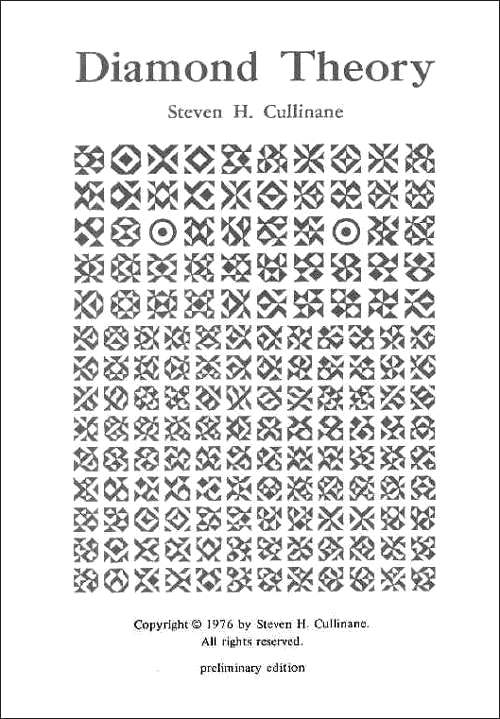

“Anomalies must be expected along the conceptual frontier
between the temporal and the eternal.”
— The Death of Adam, by Marilynne Robinson, Houghton Mifflin,
1998, essay on Marguerite de Navarre.
* See a Calvin in this journal on the dies natalis of Professor MacIntyre.

AI scholium —

Compare and contrast:
Netflix self-deprecation snark —
Sunday, June 1, 2025
|
"Climb a mountain and turn around …." — Stevie Nicks


Scholium —
From The Hawkline Monster, by Richard Brautigan:
“What are we going to do now?” Susan Hawkline said,
surveying the lake that had once been their house.
Cameron counted the diamonds in his hand.
There were thirty-five diamonds and they were
all that was left of the Hawkline Monster.
“We’ll think of something,” Cameron said.

Illustration: https://www.instagram.com/p/DKU2f-oOz_O/ .
In memory of comic book writer Peter David, who reportedly died
on May 24, here is a sequel to this morning's post The Nobel Eye . . .
The URL http://ninefold.space now forwards to …
http://m759.net/wordpress/?tag=lo-shu .
Click the above image for the source, and see a related image here.
"Odyssey’s new AI model
streams 3D interactive worlds"
— Kyle Wiggers at TechCrunch.com
11:34 AM PDT · May 28, 2025
To interact with space itself ,
vide the readings in the previous post
illustrating the dichotomies of Robert M. Pirsig.
These dichotomies are much more politically
correct than those attributed by Aristotle to
Pythagoras . . .
|
The central aim of Western religion – "Each of us has something to offer the Creator... the bridging of masculine and feminine, life and death. It's redemption.... nothing else matters." -- Martha Cooley in The Archivist (1998) The central aim of Western philosophy– Dualities of Pythagoras as reconstructed by Aristotle: Limited Unlimited Odd Even Male Female Light Dark Straight Curved ... and so on .... “Of these dualities, the first is the most important; all the others may be seen as different aspects of this fundamental dichotomy. To establish a rational and consistent relationship between the limited [man, etc.] and the unlimited [the cosmos, etc.] is… the central aim of all Western philosophy.” — Jamie James in The Music of the Spheres (1993)
“In the garden of Adding — The Midrash Jazz Quartet in City of God, by E. L. Doctorow (2000) A quotation today at art critic Carol Kino’s website, slightly expanded:
“Art inherited from the old religion — Octavio Paz,”Seeing and Using: Art and Craftsmanship,” in Convergences: Essays on Art and Literature (New York: Harcourt Brace Jovanovich 1987), 52 From Brian O’Doherty’s 1976 Artforum essays– not on museums, but rather on gallery space:
“We have now reached
“Space: what you — James Joyce, Ulysses |
Related posts:
Space Itself and the new URL Cube.gallery.
Powered by WordPress